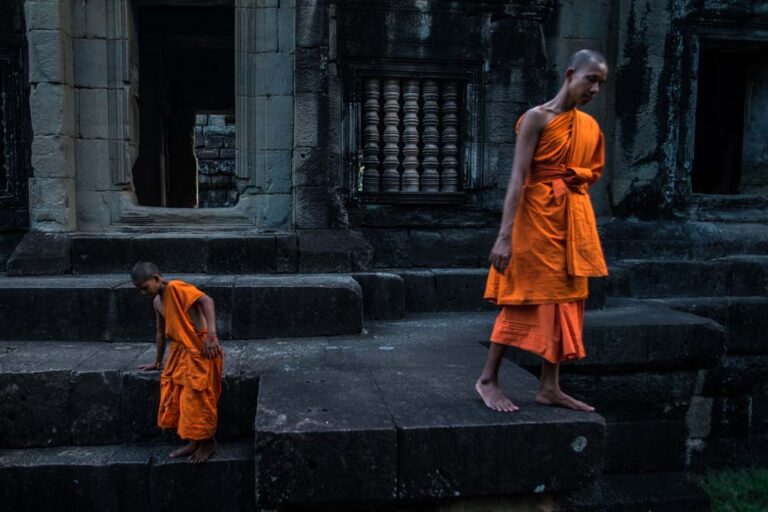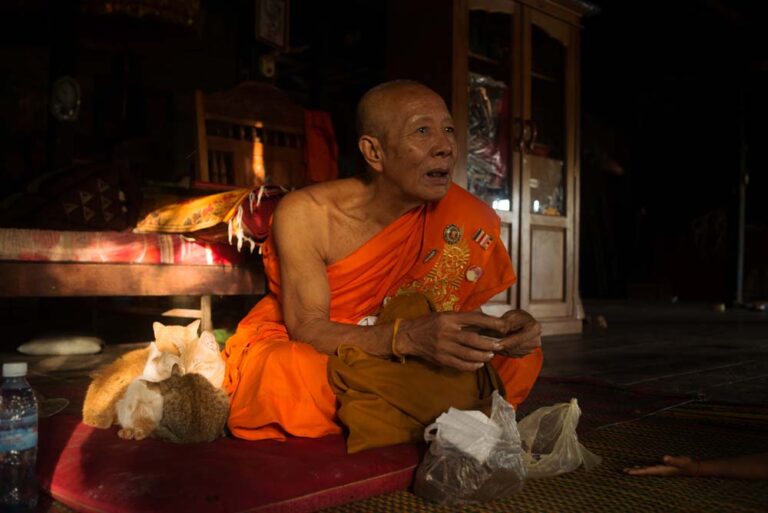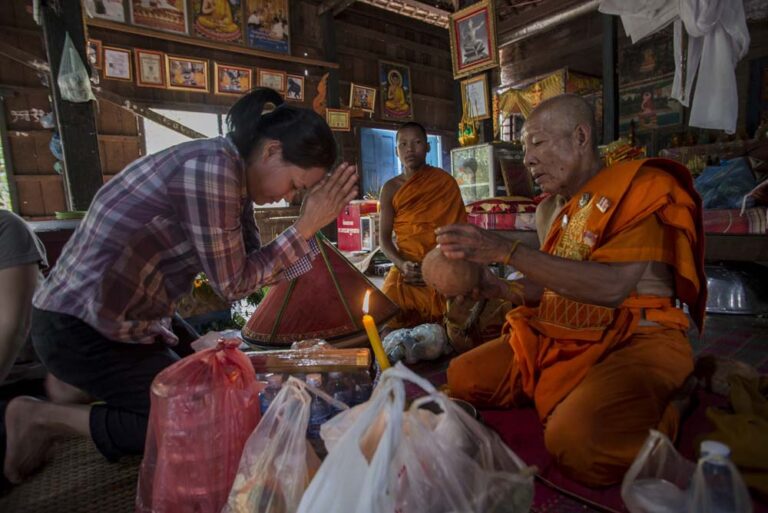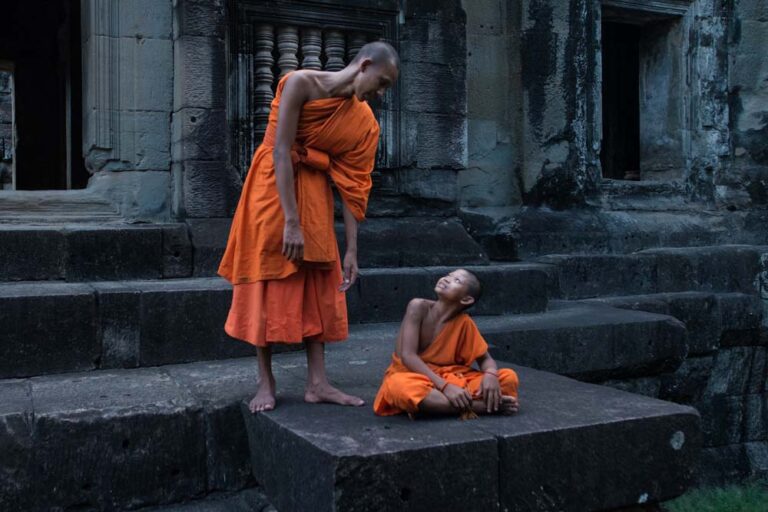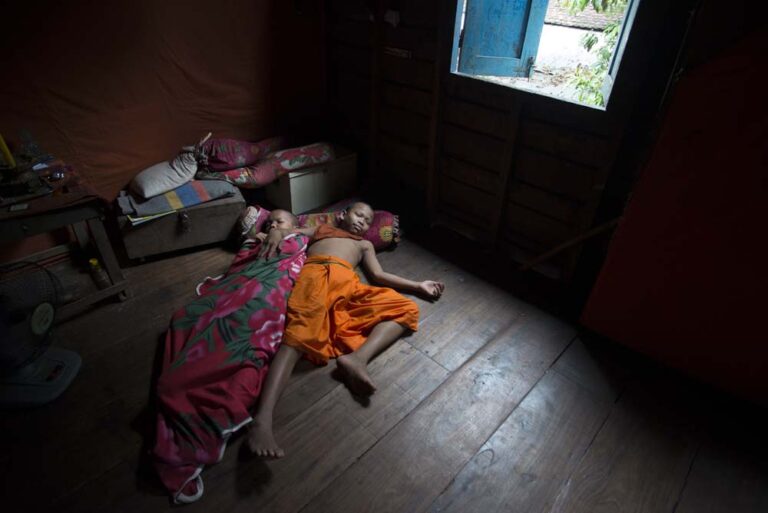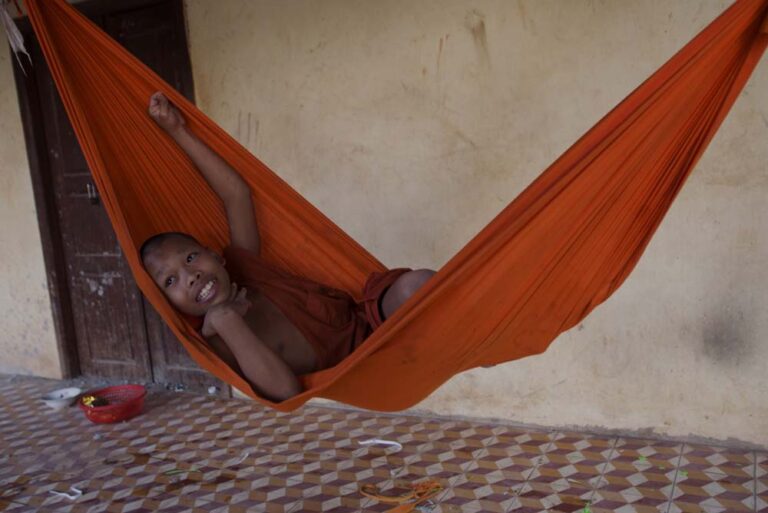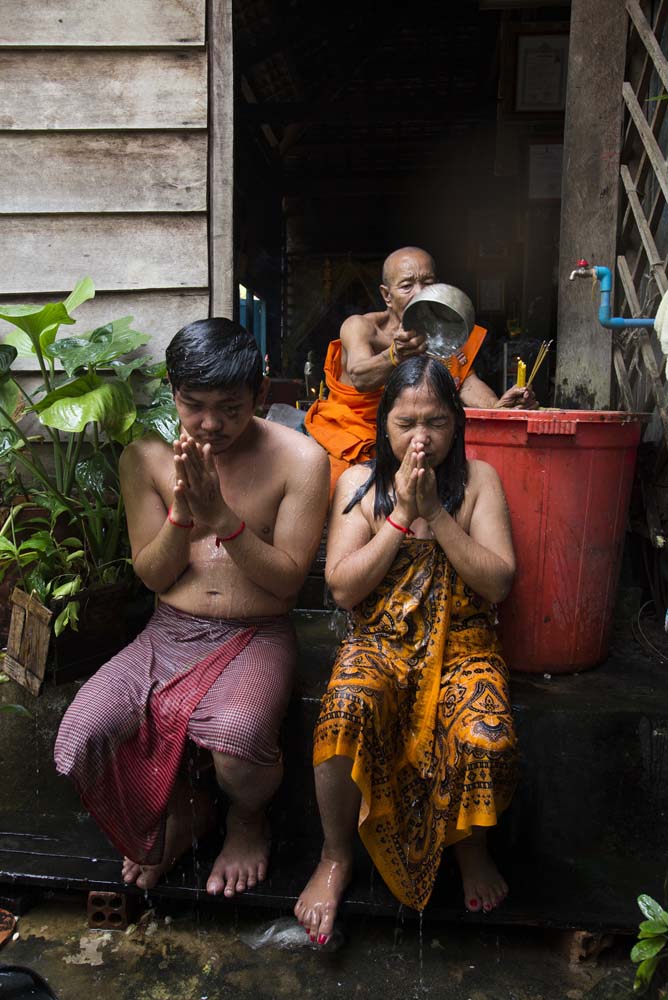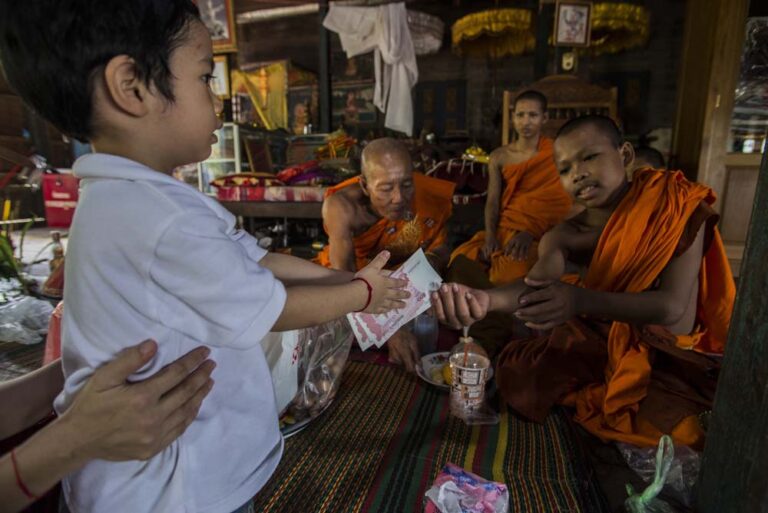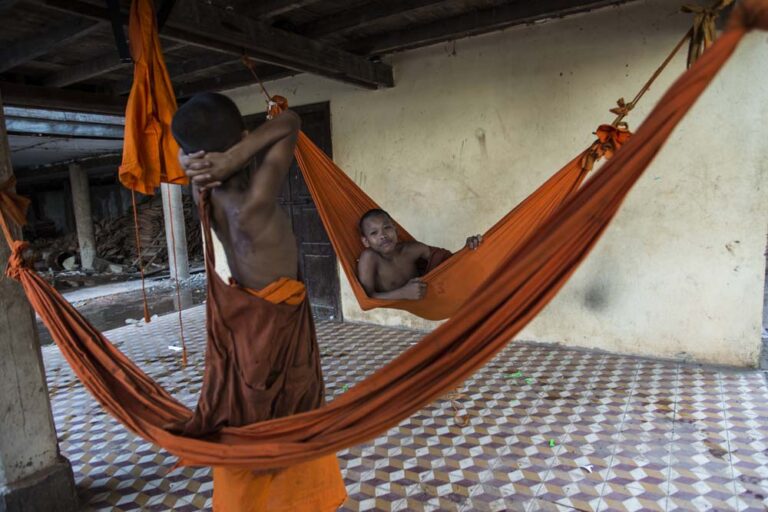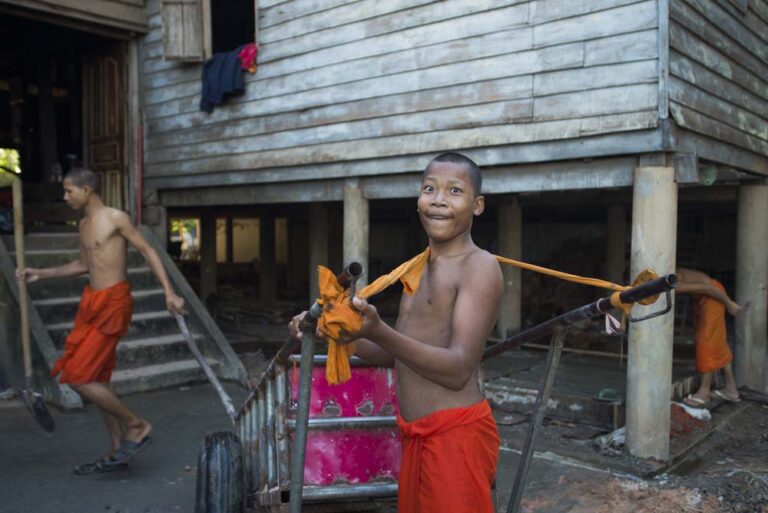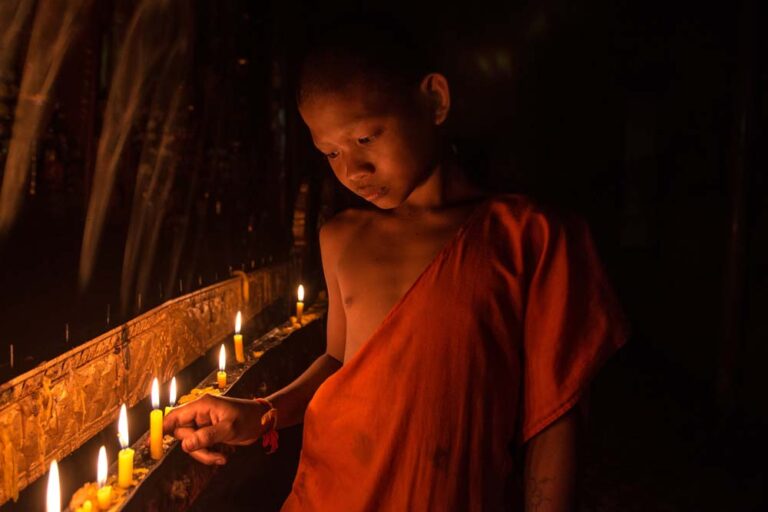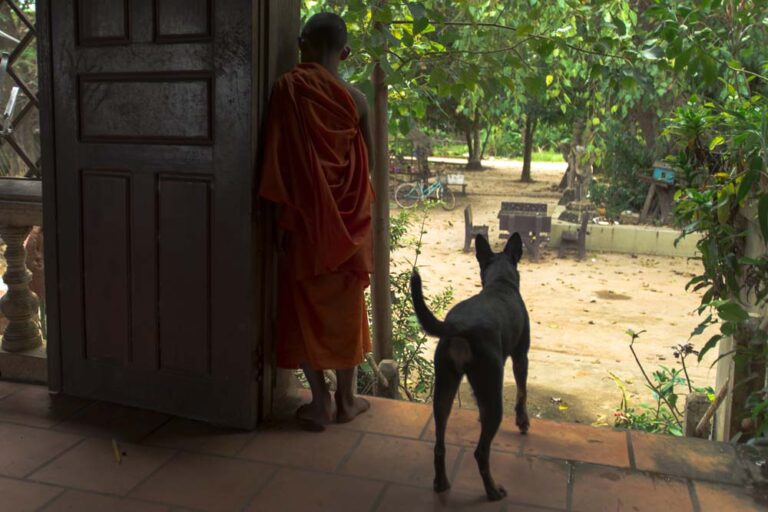The lost Wat Athvea
The first light of dawn gilds the ancient sandstone of Wat Athvea, but its modern heart is already beating. From the surrounding pagoda, a line of monks in saffron robes begins a silent procession. Their daily alms round through the nearby village is a sacred rhythm, a timeless exchange where offerings of food sustain the body and the act of giving nourishes the soul.
Back within the temple grounds, the two worlds coexist. The 12th-century towers, carved with fading devatas, stand guard over daily monastic life. After their single morning meal, the younger novices sweep leaves from the ancient stones while others study Pali scriptures in the shade of the new prayer hall. Their chatter is a soft counterpoint to the temple’s silent history.
As the heat peaks, the world grows quiet, filled only with the hum of insects and the focus of meditation. The monk’s life is a deliberate contrast: their vibrant orange robes a moving splash of color against the grey, weathered stone, their transient prayers breathed into the permanence of a king’s forgotten monument.
By evening, the tourists depart. The temple complex returns to its residents. The echoes of ancient hymns seem to blend with the monks’ evening chants, finally unifying the old and the new in the shared pursuit of peace.


